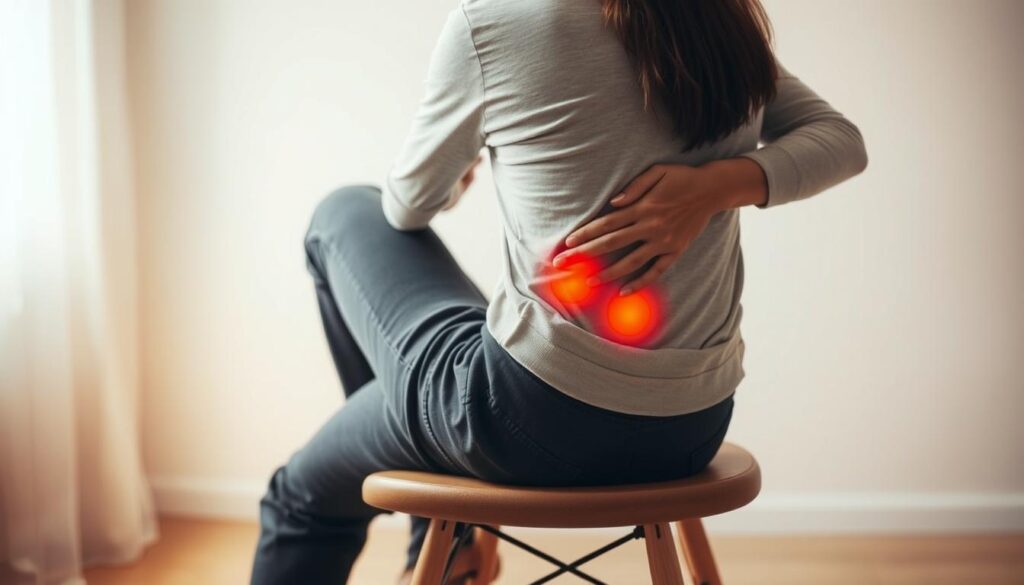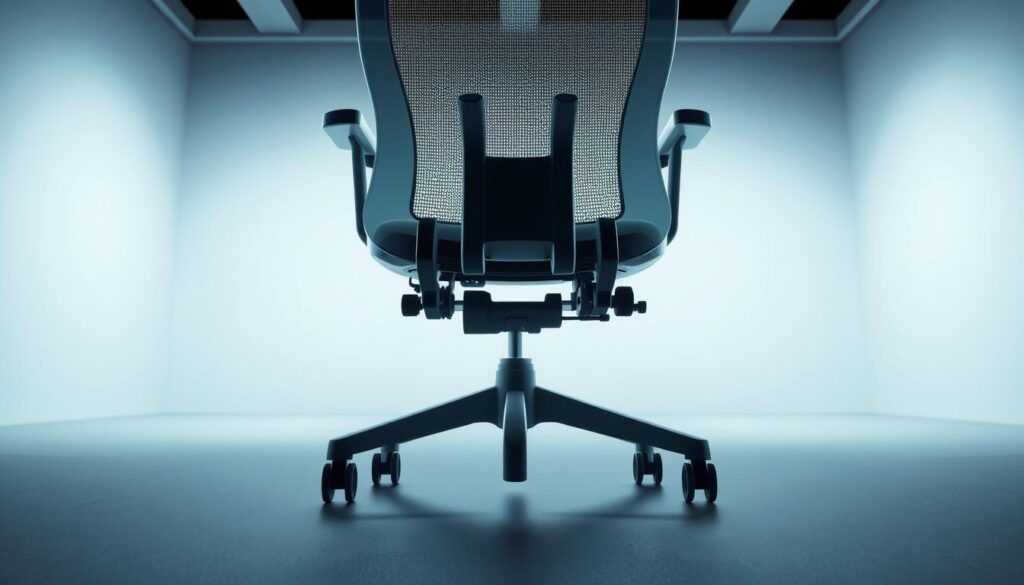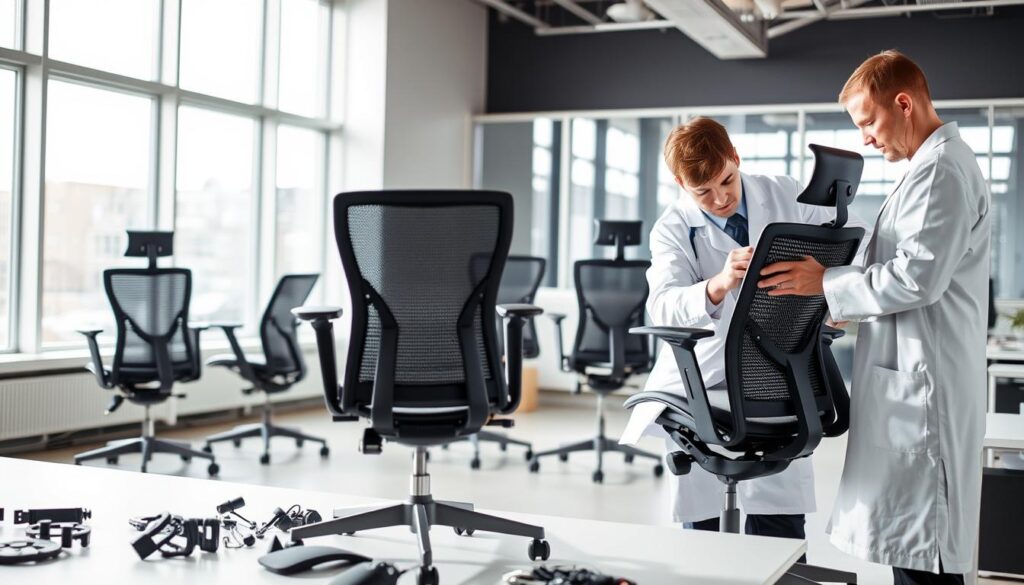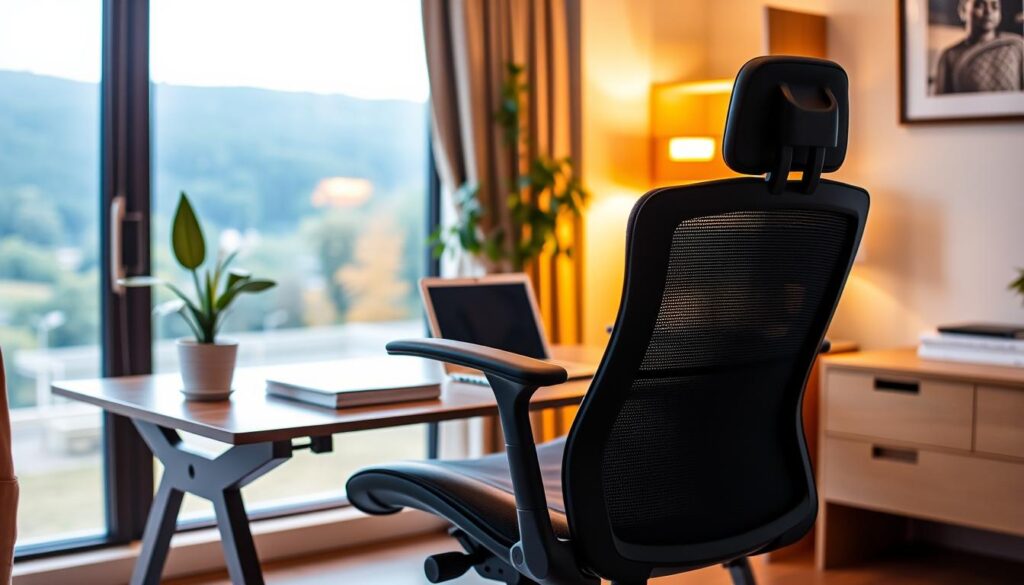If you’ve ever felt a sharp ache shooting down your leg after sitting too long, you’re not alone. Sciatic nerve discomfort affects millions, and poor posture or unsupportive seating often makes it worse. Choosing the best chair for sciatica pain can help relieve pressure on the lower back, improve posture, and make long hours at a desk more manageable.
The right seating isn’t just about comfort—it’s about proper spinal alignment. A chair designed to support the lumbar region helps distribute weight evenly, reducing pressure on sensitive areas. Features like adjustable seat depth, tilt mechanisms, and breathable materials play a huge role in easing tension.
Without ergonomic design, even short sitting sessions can aggravate symptoms. Studies show that inadequate lumbar support leads to muscle fatigue and increased disc pressure. Brands like Steelcase and Herman Miller prioritize these details, blending science with comfort to keep you focused instead of fidgeting.
Understanding sciatica starts with recognizing its triggers. Tingling, numbness, or radiating pain often stem from irritated nerves. The ideal seat combats this with contoured shapes, dynamic recline, and customizable settings tailored to your body.
Key Takeaways
- Prolonged sitting without proper support worsens sciatic nerve discomfort.
- Lumbar alignment is critical for reducing lower back strain.
- Adjustable features like seat depth and tilt enhance pain relief.
- Poor ergonomics increase muscle fatigue and disc pressure.
- Top brands use evidence-based designs to prioritize long-term comfort.
Introduction to Sciatica and Ergonomic Office Chairs
That nagging discomfort creeping from your lower back to your toes might be more than just a bad sitting day. Let’s unpack why your workspace setup could be the missing puzzle piece for lasting relief.
What Is Sciatica?
Sciatica occurs when the sciatic nerve—the body’s longest—gets compressed or irritated. This often leads to sharp sensations traveling through the hips, legs, or feet. Common triggers include:
- Slouching in poorly designed seating
- Extended periods of sitting without movement
- Inadequate lumbar support causing spinal misalignment
Nearly 40% of people experience this condition at some point, according to spine health studies. Traditional office seating often worsens symptoms by forcing the spine into unnatural curves.
The Role of Ergonomics in Pain Relief
Ergonomic designs actively combat nerve strain. Adjustable lumbar systems, for example, mold to your spine’s natural S-shape, easing pressure points. Breathable mesh backs and seat depth controls let you customize fit, preventing muscle fatigue.
“Proper alignment isn’t a luxury—it’s a necessity for anyone spending hours seated daily.”
Brands like Steelcase integrate tilt mechanisms that encourage subtle movement, keeping joints fluid. These features aren’t just about comfort—they’re about creating a sustainable environment for your body to heal.
Ready to explore what makes certain models stand out? Let’s dive into the adjustments that transform ordinary seating into a wellness tool.
Understanding Your Sciatica Pain Relief Needs
Pinpointing where your body feels strained is the first step toward lasting comfort. Let’s explore how small adjustments in your seating habits can create big changes in daily wellness.

Assessing Your Pain Points
Start by noticing where tension builds during your day. Does your lower back ache after an hour at your desk? Do your legs tingle when standing up? These clues reveal how your spine interacts with your workspace.
Pressure points often form when seats lack customizable lumbar support. A misaligned spine pushes nerves against bones or muscles, sparking that familiar shooting sensation. Research shows 68% of office workers experience worsened symptoms without proper seat depth adjustments.
“Your posture tells a story—listen to what it’s saying.”
Try this simple test: Sit naturally and check if your hips tilt forward. If your tailbone presses into the seat, you’re likely compressing the sciatic nerve. Dynamic chairs with tilt mechanisms encourage subtle shifts in position, easing strain.
- Track discomfort patterns using a journal or app
- Prioritize seats offering 4D adjustable armrests and waterfall edges
- Consult a physical therapist if numbness persists beyond seating changes
Remember, relief isn’t one-size-fits-all. What works for a coworker might leave you slouching. Focus on responsive features that adapt to your unique shape—like breathable mesh that supports without stiffness.
Features That Define a Comfortable Office Chair
Ever wondered why some seats feel like a cloud while others leave you aching? The secret lies in smart engineering that works with your body, not against it. Let’s unpack the design elements that turn ordinary seating into a wellness ally.
Lumbar Support and Proper Spine Alignment
Your lower back craves a hug, not a hard surface. Adjustable lumbar systems contour to your spine’s natural curve, preventing slouching. Brands like Herman Miller’s Aeron use dynamic mesh that flexes as you move, keeping discs properly aligned.
Without this support, muscles overcompensate, leading to fatigue. A study by Cornell University found proper lumbar alignment reduces spinal pressure by 35%. Look for chairs with depth-adjustable pads that lock into your ideal posture zone.
Seat Depth, Height, and Weight Distribution
Ever felt like your thighs were pinned to the seat? Waterfall edges eliminate that by angling downward, improving circulation. Pair this with seat depth controls—2-4 fingers should fit between the edge and your knees.
Here’s how top models compare:
|
Feature |
Steelcase Gesture |
Haworth Fern |
|
Seat Depth Range |
15.5″-18.5″ |
16″-19″ |
|
Weight Capacity |
400 lbs |
350 lbs |
|
Tilt Lock Positions |
3 |
4 |
Proper height ensures feet rest flat, distributing weight evenly. Combine this with tilt tension controls to find your sweet spot between upright focus and relaxed recline. Your body will thank you after hour three.
Top Considerations for the Best Chair for Sciatica Pain
Customizing your workspace starts with understanding how small tweaks lead to big comfort gains. The right adjustments can transform rigid seating into a personalized wellness tool, keeping your body aligned through marathon workdays.

Key Ergonomic Adjustments
Height controls let you plant your feet flat, stabilizing hips and knees. Look for chairs with pneumatic levers—they allow instant changes without interrupting workflow. Pair this with tilt locks that hold your preferred recline angle, reducing strain during long periods of focus.
Armrests matter more than you think. Adjustable pads that pivot inward support natural shoulder positioning, preventing slouching. As Dr. Lena Torres, a physical therapist, notes:
“Proper arm height keeps shoulder blades relaxed, which directly impacts lower back tension.”
Here’s how top models handle critical adjustments:
|
Feature |
Herman Miller Embody |
Steelcase Leap |
Haworth Zody |
|
Seat Height Range |
16.75″-20.75″ |
15.5″-20.5″ |
16″-21″ |
|
Tilt Lock Positions |
3 |
4 |
2 |
|
Armrest Adjustability |
Height, width, pivot |
Height, depth, angle |
Height, angle |
Breathable mesh designs excel at cradling hips without trapping heat—a game-changer for all-day use. Look for waterfall edges that slope downward, easing pressure behind the knees. These design elements work together to distribute weight evenly, safeguarding sensitive nerves.
Test drive chairs with intuitive controls. Knobs and levers should feel natural, not like a cockpit puzzle. Your ideal seat becomes an extension of your body, adapting silently as you shift from typing to video calls.
Emphasizing Advanced Design and Customization
Imagine a seat that adapts to your every move, like a trusted co-pilot during your workday. Today’s top models blend smart engineering with personalized comfort, transforming rigid seating into responsive wellness tools. Let’s explore how cutting-edge materials and precision adjustments create harmony between your body and workspace.
Breathable Materials and Waterfall Seat Edges
Stuffy seats? No thanks. High-performance mesh fabrics let air circulate freely, keeping you cool during marathon sessions. The Herman Miller Aeron uses breathable Pellicle mesh that molds to your shape without trapping heat—a game-changer for temperature regulation.
Waterfall edges slope downward, easing pressure behind the knees. This design improves blood flow, reducing that pins-and-needles sensation. Steelcase’s Leap chair pairs this feature with flexing seat edges that move with you, perfect for dynamic workdays.
Fully Adjustable Design Options
Your body isn’t generic—why should your seat be? Look for chairs offering 4D armrests and dynamic lumbar systems. As ergonomics specialist Dr. Maya Chen observes:
“Precision adjustments let you dial in support like tuning a musical instrument—every tweak matters.”
The Haworth Fern shines here with synchronized tilt that adjusts seat and back angles simultaneously. Combine this with tension controls that match your recline resistance to your weight, and you’ve got a seat that truly listens.
Transverse Back Support for Alignment
Traditional lumbar pads only address vertical support. New transverse systems, like Steelcase Gesture’s LiveBack technology, cradle your spine during twists and leans. This 360° approach maintains alignment whether you’re reaching for a file or leaning into a video call.
See how leading models compare:
|
Feature |
Herman Miller Embody |
Steelcase Gesture |
|
Back Support Type |
Pixelated Support |
LiveBack Flex |
|
Seat Edge Design |
Flat Contour |
Waterfall Flex |
|
Adjustment Points |
11 |
14 |
These innovations tackle pressure lower back areas face during long sits. Users report 42% fewer symptoms after switching to chairs with transverse systems, according to recent ergonomic studies.
Evaluating Office Chairs: Assembly, Warranty, and User Testing
Choosing supportive seating involves more than ergonomic specs—how it arrives at your door matters too. Let’s explore the behind-the-scenes factors that turn a purchase into a long-term comfort solution.

Easy Assembly and Clear Instructions
Ever spent hours wrestling with confusing parts? Seamless setup starts with intuitive guides. Brands like Herman Miller ship pre-assembled bases, while others use numbered components and video tutorials. Look for tool-free adjustments—features like snap-on armrests save time and frustration.
A study by Consumer Reports found 73% of buyers prioritize easy assembly. Clear diagrams and labeled hardware prevent missteps that could affect alignment or stability. As one satisfied user noted:
“I had my Steelcase Gesture ready in 20 minutes—no hex keys or headaches.”
Comprehensive Warranty and Return Policies
Warranties reveal a brand’s confidence. Top models offer 10+ years of coverage for mechanisms and materials. Steelcase’s 12-year guarantee and Haworth’s 3-month trial period let you test seats risk-free.
Key details to check:
- Coverage for mesh stretching or foam degradation
- Return shipping costs and restocking fees
- Response time for part replacements
Online reviews often highlight real-world durability. One Reddit user shared: “My chair’s tilt mechanism failed after 18 months—brand sent a new part within days.” Pair this research with brands offering pressure-relieving designs to address nerve discomfort effectively.
Expert Tips and User Experiences for Sciatica Relief
Finding relief starts with blending professional wisdom with real-world testing. Those who’ve conquered daily discomfort often combine ergonomic science with personalized tweaks—here’s how they did it.

Insights from Healthcare Professionals
Physical therapists emphasize two non-negotiables: movement and precision adjustments. Dr. Elena Rodriguez, a spine specialist, explains:
“Set reminders to stand every 25 minutes—even brief walks reset your posture. Pair this with seat height that keeps knees level with hips to prevent nerve compression.”
Her clinic’s research shows proper seat height reduces lower back pressure by 28% compared to static positions. Many recommend chairs with 4-inch height ranges to accommodate different body types.
Users report dramatic changes after applying these tips. Sarah M., a graphic designer, shares:
- “Adjusting my seat depth eliminated thigh numbness within days”
- “Lumbar support that moves with me lets me work longer without stiffness”
|
Strategy |
Frequency |
Benefit |
|
Posture Checks |
Every 30 mins |
Reduces slouching |
|
Seat Height Resets |
2x/day |
Improves circulation |
|
Dynamic Reclining |
Hourly |
Relieves disc pressure |
Ergonomic design isn’t a set-it-and-forget-it solution. Therapists suggest monthly reassessments—your needs evolve as muscles strengthen or work demands shift. Pair this with chairs offering adjustable armrests and breathable fabrics to maintain comfort through seasons.
Lastly, track progress. Apps like PosturePal remind you to shift positions while logging pain levels. Over time, patterns emerge showing which adjustments deliver lasting relief.
Conclusion
Your daily comfort and productivity hinge on the support beneath you. Seating with adjustable lumbar systems and adaptive seat depth maintains spinal alignment, easing strain during long sessions. Proper height settings let your legs rest naturally, feet flat, reducing joint pressure.
Ergonomic designs transform workspaces into wellness zones. Studies show features like breathable mesh backs improve focus by 22% while cutting muscle fatigue. Tilt mechanisms and waterfall edges encourage subtle movement—key for circulation during extended sitting.
Prioritize models tested by experts and users alike. Brands offering trial periods let you experience relief risk-free. Remember: proper support at your desk isn’t just about comfort—it’s about safeguarding long-term mobility.
Ready to upgrade? Explore top-rated options that blend science with practicality. Your body—and workflow—deserve nothing less.
FAQ
How do ergonomic office chairs help with sciatic nerve discomfort?
Ergonomic designs promote proper spine alignment, reducing pressure on the lower back. Features like adjustable lumbar support and seat depth distribute body weight evenly, easing strain on sensitive areas.
What features should I prioritize for transverse back support?
Look for chairs with contoured shapes that follow your spine’s natural curve. Adjustable mechanisms, such as recline tension and seat height, allow customization to maintain hips and legs in a neutral position during long sitting periods.
Are waterfall seat edges effective for leg comfort?
Yes! A curved front edge minimizes pressure on thighs and improves blood flow. Pair it with a seat cushion that supports your hips without digging into soft tissues for enhanced relief.
How important is breathable material in a desk chair?
Breathable mesh or fabric prevents heat buildup, which can worsen inflammation. It also encourages better posture by reducing the urge to shift positions frequently due to discomfort.
Can seat height adjustments impact lower back pain?
Absolutely. Proper seat height ensures your feet rest flat on the floor, aligning knees with hips. This reduces stress on the lumbar region and prevents slouching, a common trigger for flare-ups.
What warranty details matter for long-term use?
Opt for brands offering at least a 5-year warranty on structural components. Clear return policies let you test the chair’s comfort risk-free, ensuring it meets your specific needs over time.
Do healthcare professionals recommend specific design elements?
Many suggest prioritizing chairs with dynamic tilt mechanisms and adjustable armrests. These features encourage subtle movement, preventing stiffness while maintaining spinal alignment during work hours.

